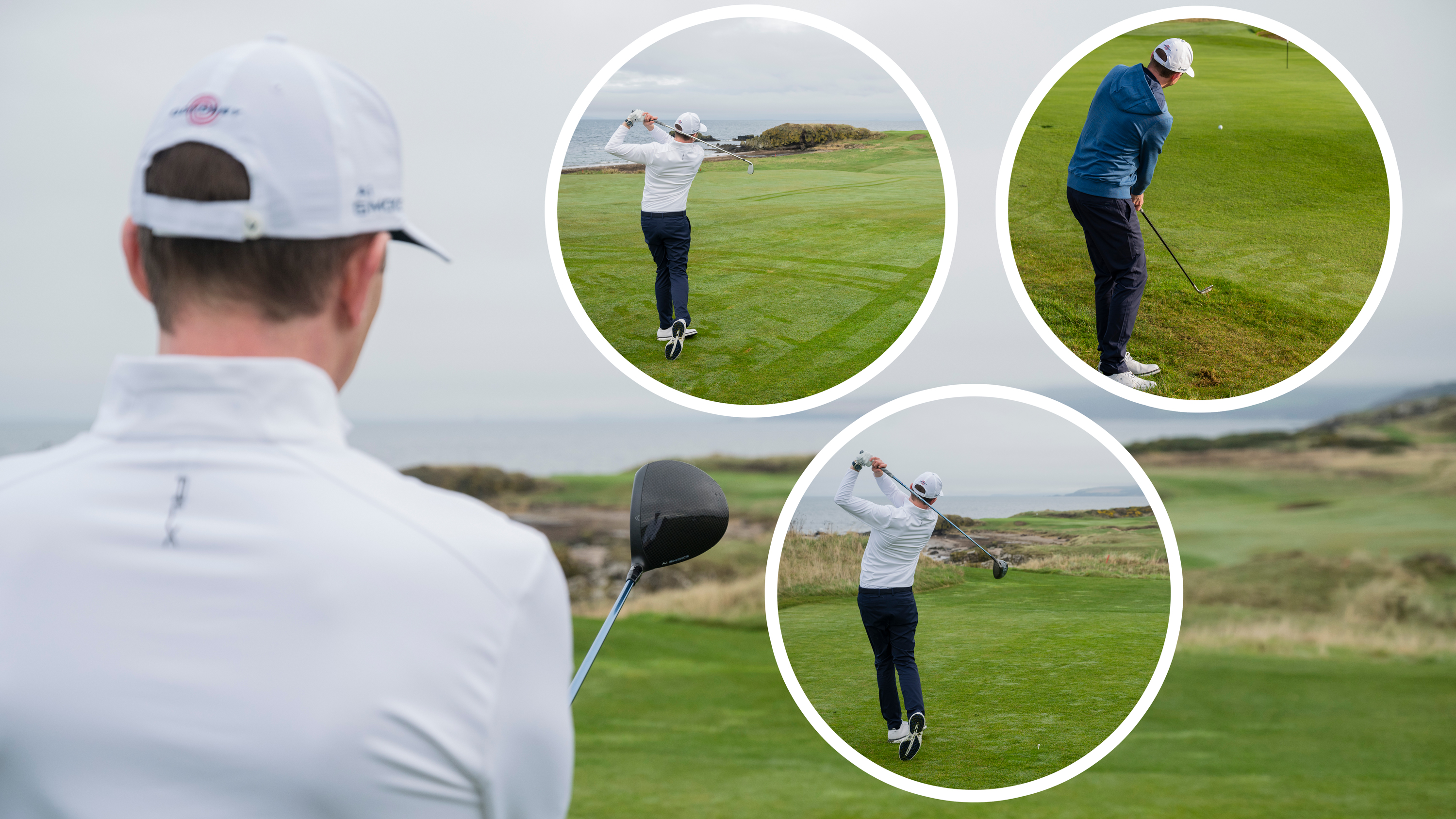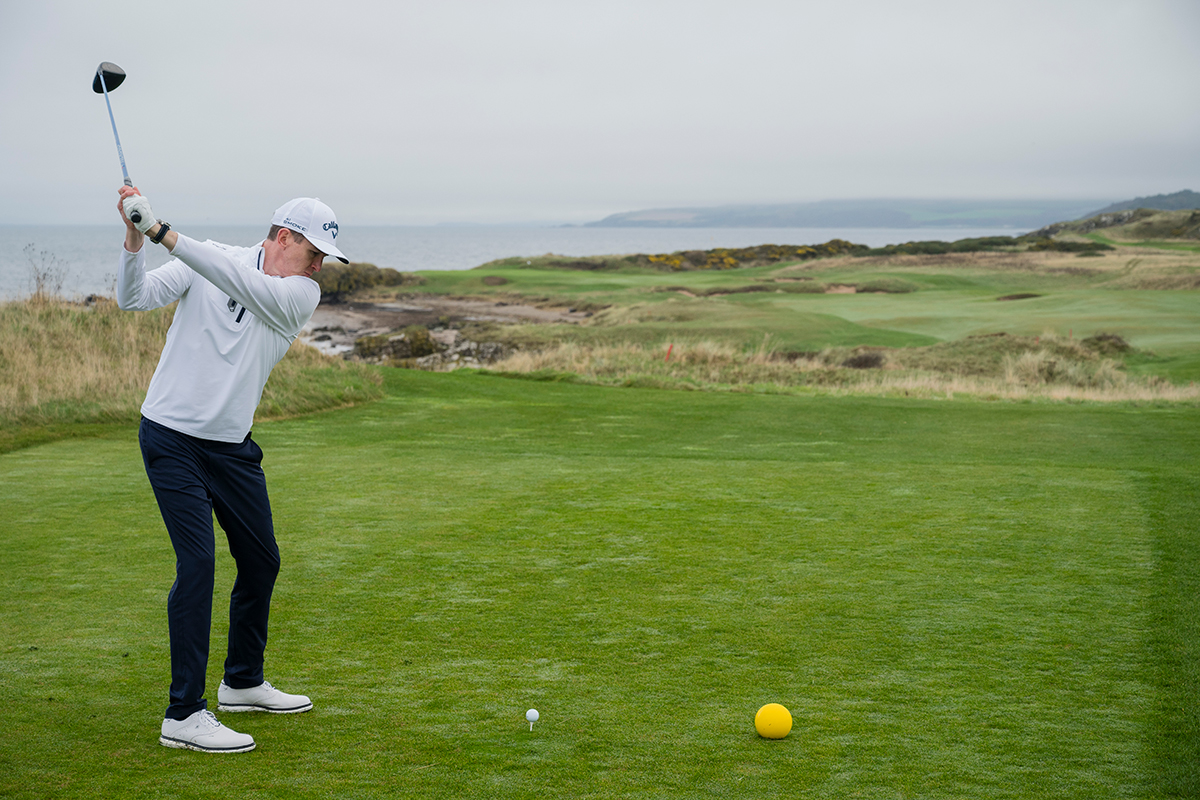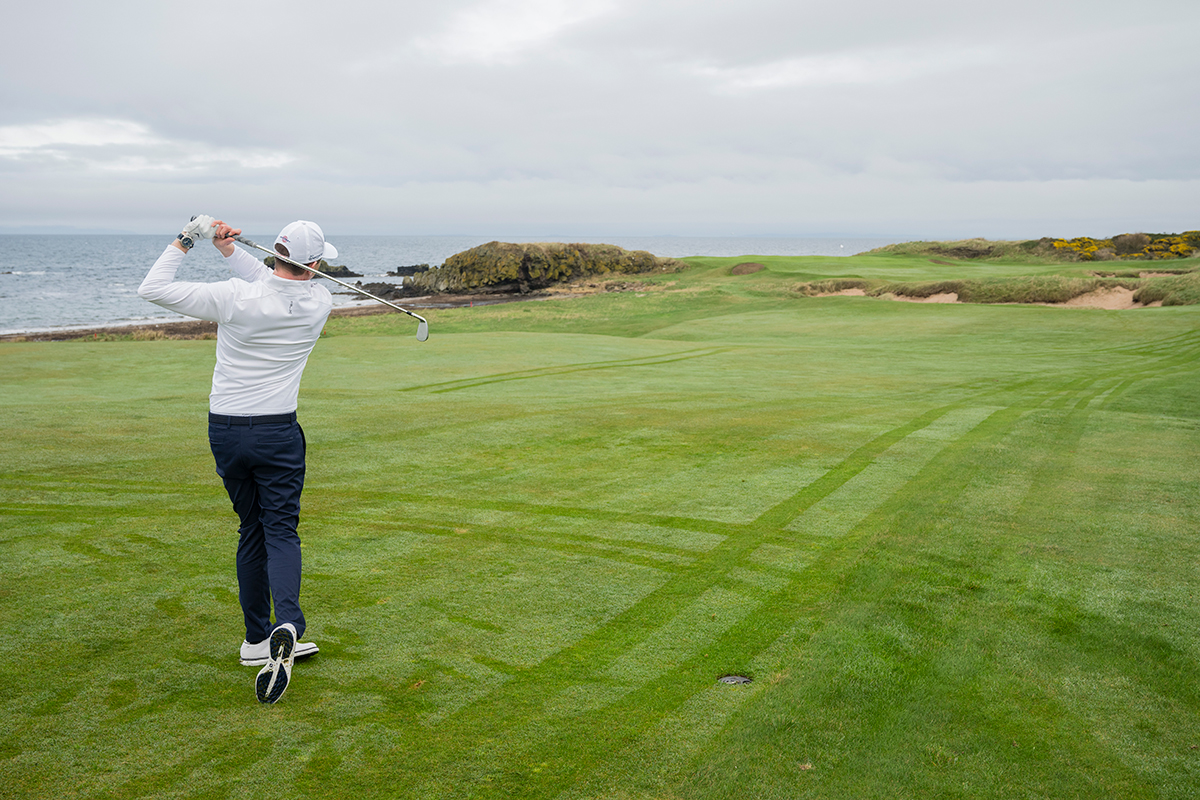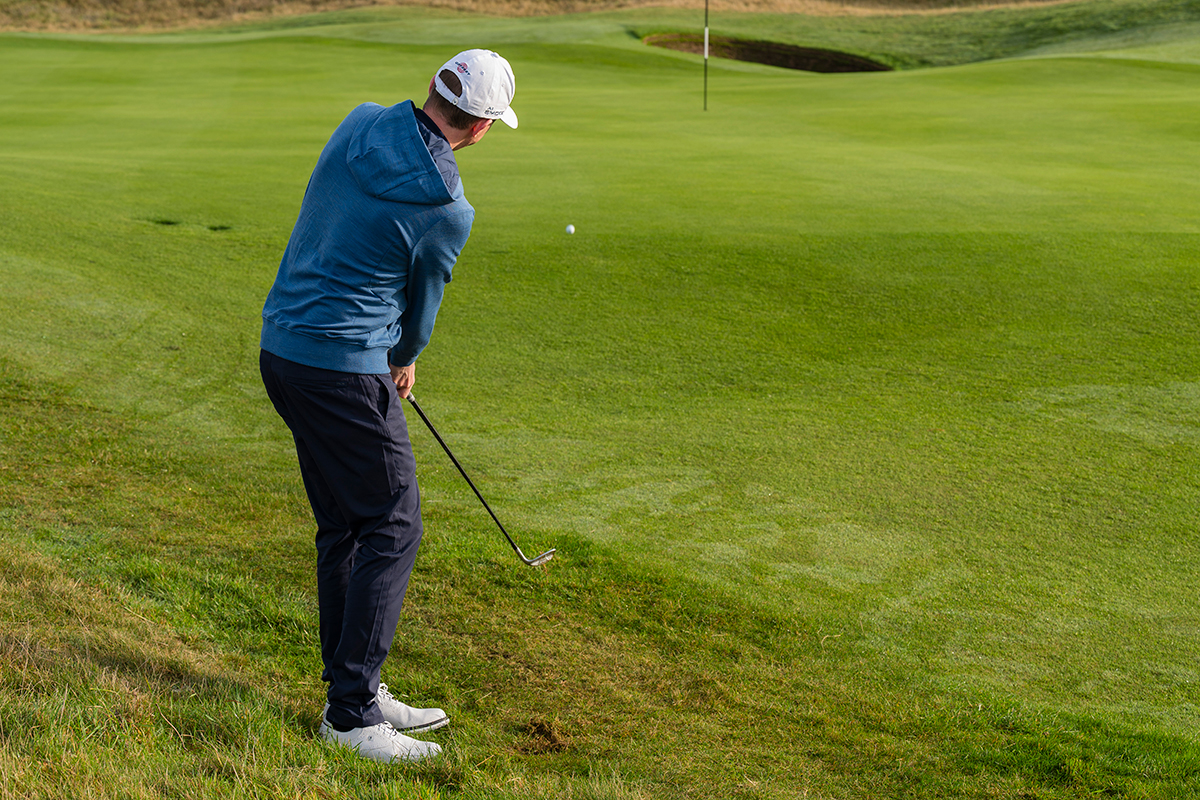Do You Often Zigzag Around The Golf Course? Try 3 Dependable Shots All Amateur Golfers Should Learn To Hit
Chopping it around the golf course and barely seeing your playing partners is not fun, so add these 3 stable shots to your game to boost consistency and scoring

Ben Emerson

Let me start by saying, I feel your pain. I too have spent round after round zig-zagging around the course trying to put together a respectable score - often spending most of the time well away from my playing partners who regularly occupy the fairway.
Before, I never really grasped how an oversight in my pre-shot routine, specifically relating to my shot selection, was negatively impacting my ability to not only navigate my way around the golf course but also score well.
But, after talking to one of our prestigious Golf Monthly Top 50 Coaches about my issues, I was pleased to see a remarkable uptick in consistency - so I thought I'd share it with you too.
Below, PGA Fellow Coach Ben Emerson shares three dependable shots that all amateur golfers should learn to hit in order to find more fairways and avoid one of the most common mistakes amateur golfers make around the greens...
3 Dependable Shots All Amateur Golfers Should Learn To Hit
Before we get started on our list of three dependable shots all amateur golfers should learn to hit, let's take a look at some data to highlight the issues amateur golfers face.
According to Shot Scope, the average amateur golfer hits the fairway off the tee less than 50% of the time - with a pretty even split of right and left misses leading to difficulties in finding the green in regulation.
It's a similar story on approach, with less than half of all shots finding the putting surface from over 100 yards out.
Subscribe to the Golf Monthly newsletter to stay up to date with all the latest tour news, equipment news, reviews, head-to-heads and buyer’s guides from our team of experienced experts.
With that in mind, mastering these three stable shots could be the answer to better scoring and a more consistent game - which is why we asked a coach with decades of experience and a plethora of professional qualifications to teach us how...

Ben Emerson is a Golf Monthly Top 50 Coach with a modern approach to the game. His methods have seen him become one of the most revered coaches in the country, and even has a few celebrity clients on his books. In his coaching career of more than 20 years, Ben has helped golfers of all ages and abilities to improve their performances and enjoy the game.
1. How To Factor In The Wind When Hitting Driver
The chances of you playing golf with absolutely no wind is very small indeed, and for those of us who play in very unpredictable conditions this shot is an absolute must-have option for amateur golfers.
You don't have to be playing links golf to utilise this shot, just understanding your shot shape can help to pick the perfect line for your game. If possible, look up at any trees to check wind speed and direction as the tee may be sheltered.

Factor in conditions to your shot selection and strategy on each hole
Good players who know how to shape golf shots can counter the wind by hitting a draw or a fade, but the safer option for most is to use the wind. Simply adjust your alignment and use your normal swing.
Trust the wind as much as you can, but never aim out of bounds; this could prove disastrous if the wind were to stop or switch directions.
Tee the ball lower, set it slightly back in your stance and swing nice and easy. Hitting it hard will create more spin on the golf ball. Remember - hitting an iron or fairway wood is a sensible option for some golfers off the tee as this will give you added control.
2. The Knock Down Shot
Understanding how to calculate distance in the wind is crucial, but you don't necessarily have to send the ball up into it.
If you want to hit a knock down shot successfully, and keep the ball flight low under the wind, you must focus on some key alterations to your setup and strategy.
Firstly, I would advise taking more club than you would for a standard shot which would allow me to swing a little bit more easily. At setup, the perfect ball position is slightly back and the hands are forward.
Try to get your weight shifted over to your lead side earlier and keep your chest on top of the ball a little more than with a traditional shot.

The knock down shot is a great option to navigate a tricky hole
This is a shot you can call on any time, not just in difficult conditions, as knocking an iron down and finding the fairway is a great recipe for better scoring if your ball striking is erratic and unpredictable.
Practice
You don’t need to wait for a windy day to practice this shot on the range - and I would advise that you dedicate some time adding it to your repertoire.
Having the skill fine tuned will come in handy the next time you are faced with a tough shot on a blustery day.
3. The Bump And Run Shot
For me, the general rule of thumb is if there is nothing to go over... don't try to go over it.
Getting the ball running towards the hole as early as practically possible will help you to tidy up your short game, as the worst result from this method is a long putt whereas your worse chip might end up thinned over the back in the weeds.
This doesn't mean you don't have to learn how to chip in golf, as that is a crucial skill that you will need regularly, but when there is no danger between you and the hole it often pays off to make a sensible decision and take the safer play.

If there is nothing to go over between you and the pin, get the ball rolling as early as possible
Start by narrowing your stance and ensure your weight is on your lead foot. You also need to move your hands marginally towards the target to create a little bit of shaft lean.
There is very little wrist action in this shot, so instead you should think of it more as a putting stroke technique.
Nip the ball of the surface and get the ball running - then it's all about dialling in your distance control (but I would advise working on that during your practice sessions prior to your round).
How Do I Hit The Ball Dead Straight In Golf?
This is a difficult skill in golf, and one that many amateurs would love to be able to achieve consistently, so we asked another of our esteemed Golf Monthly Top 50 Coaches, Dan Grieve, to share with you a few pointers on how to hit the ball dead straight...
1) Nail the fundamentals, such as ball and address position.
2) Practice using alignment sticks to provide visual feedback - place across your chest to check your aim.
3) Ensure you have a low right shoulder (for right-handed golfers) and a nice wide stance.
4) Relax! Let your arms and hands hang loose to control the spin.

Baz joined Golf Monthly in January 2024, and now leads the instruction section across all platforms - including print and digital. Working closely with Golf Monthly's Top 50 Coaches, he aims to curate and share useful tips on every aspect of the game - helping amateurs of all abilities to play better golf. Baz also contributes weekly to the features section, sharing his thoughts on the game we love and the topics that matter most. A member at Sand Moor Golf Club in Leeds, he looks forward to getting out on the course at least once a week in the pursuit of a respectable handicap.
Baz is currently playing:
Driver: Benross Delta XT
3-Wood: Benross Delta XT
Hybrid: TaylorMade Stealth 4 Hybrid
Irons: Benross Delta XT 5-PW
Wedges: TaylorMade RAC 60, Callaway Jaws MD5 54
Putter: TaylorMade Spider Tour
- Ben EmersonTop 50 Coach
You must confirm your public display name before commenting
Please logout and then login again, you will then be prompted to enter your display name.